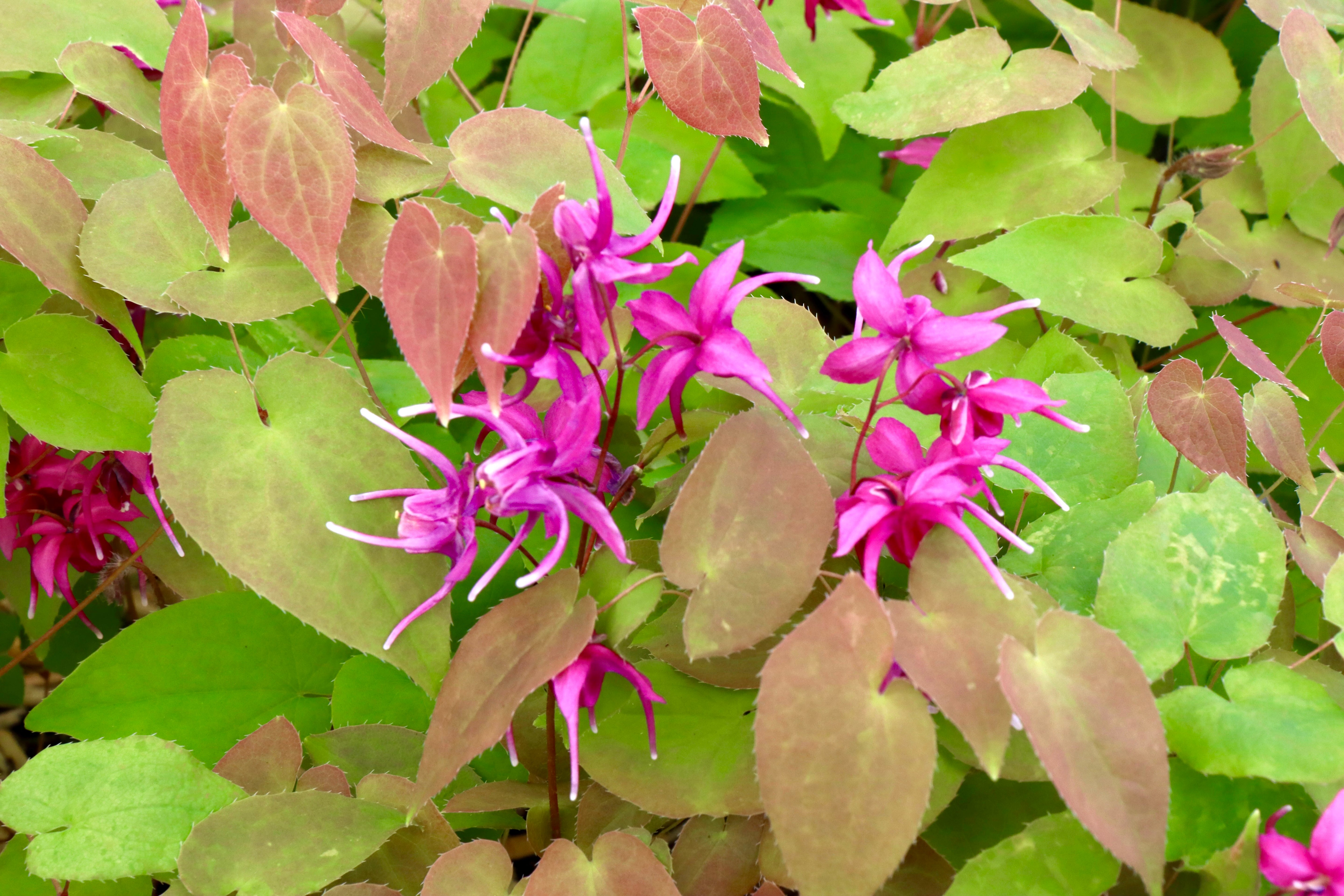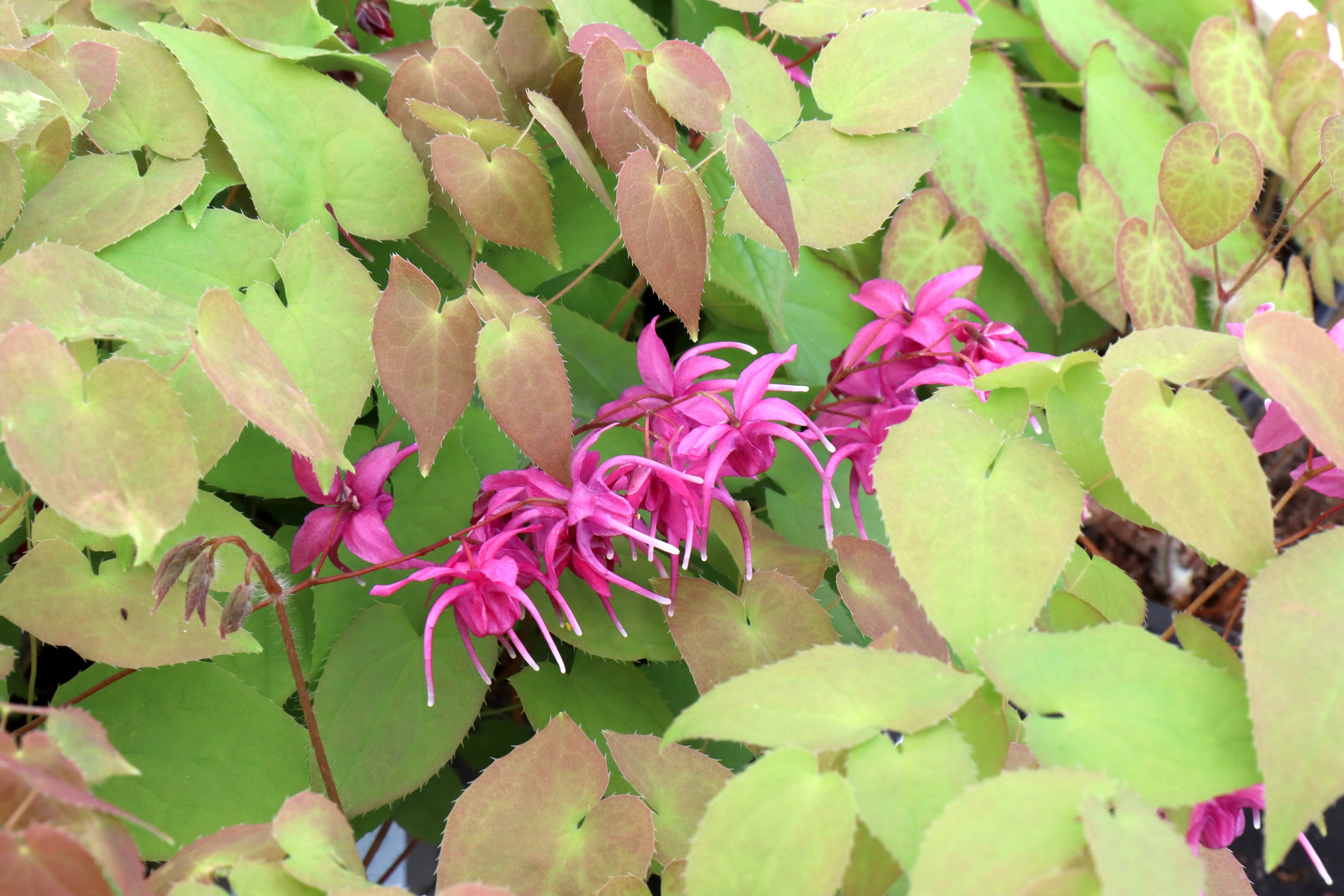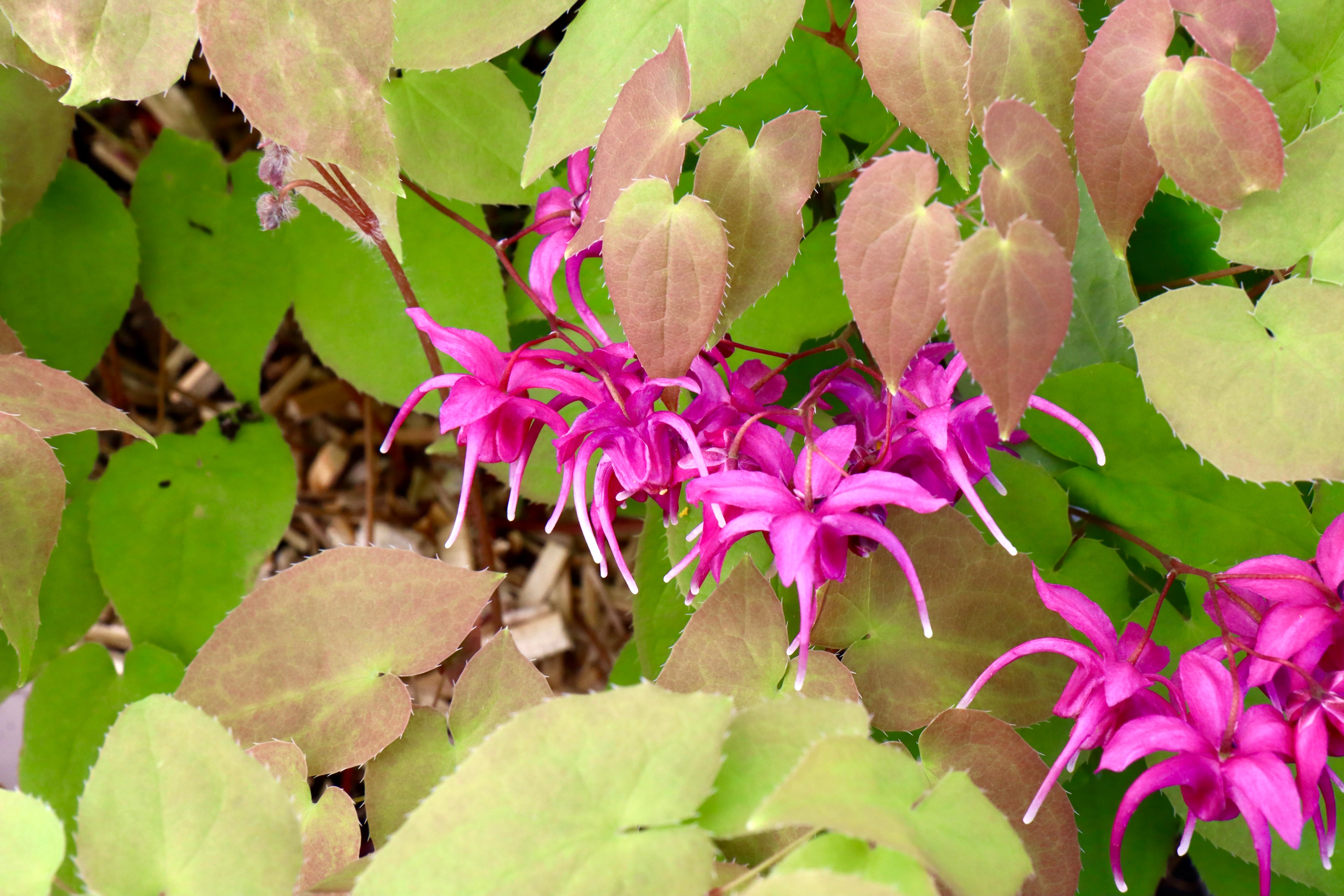Epimedium grandiflorum 'Rose Queen'
Approx. 0.5 litre pot
About this cultivar:
Epimedium grandiflorum 'Rose Queen' has handsome, medium-sized, dark green arrow-shaped leaflets. It produces no second growth flush. The leaflets are bronze when young and flushed red in spring, while masses of large pure pink flowers bloom just below the foliage. This one has the Royal Horticultural Society Award of Garden Merit (RHS AGM) but didn't do so well in the Chicago Botanic Garden Trials! I guess it depends where you grow it! The pink version of 'White Queen'.
- Position: Full shade, partial shade, full shade
- Soil: Almost any soil, grows well in Ballyrobert
- Flowers: March, April, May
- Other features: Grows well in Ballyrobert, Great Ground Cover, Dappled Shade or Full Shade Loving, Interesting Foliage or Fruit, Royal Horticultural Society Award of Garden Merit (RHS AGM)
- Hardiness: H5 - Hardy in most places throughout the UK even in severe winters (-15 to -10°C), Fully hardy - grows well in Ballyrobert!
- Habit: Clump forming
- Foliage: Semi evergreen
- Height: 15 - 25 cm (0.5 - 0.75 ft)
- Spread: 45 - 75 cm (1.5 - 2.5 ft)
- Time to full growth: 2 to 5 years
- Plant type: Herbaceous Perennial
- Colour: Green, pink
- Goes well with: -
About this genus:
Epimedium has many common names such as barrenwort, bishop's hat, fairy wings, horny goat weed, rowdy lamb herb, randy beef grass or yin yang huo (Chinese of course). No prizes then for guessing its traditional medicinal uses! A member of the barberry family, the genus was given its Botanical name by Carl Linnaeus in 1753, derived from a Greek word for a different plant, epimedion. The vast bulk of Epimedium species are deciduous or evergreen hardy perennials.
Easy-to-grow - they will grow anywhere that isn't a pond. Despite being best known as a full shade plant many will also grow in full sun ( see the photo of the cultivars we have in pots!).
Epimedium welcome spring with delicate airy flowers. Following which a solid backdrop of attractive foliage appears and remains for the rest of the season. Flowers range from white to red to yellow to pink, and the foliage shows some variation between cultivars and the seasons; green to brown to purple. A versatile plant!
In the garden Epimedium will rarely make the casual observer stop and stare but these shade lovers are essential in many gardens. Epimedium are most often used either as woodland garden specimens or ground cover for small shady areas - but don't let that stop you using them in all sorts of places, even rock gardens. We find they make great impact as ground cover - full shade or full sun!






